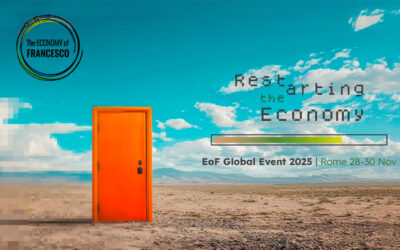<strong >December 7, 19443 is considered the day of the Focolare Movement’s birth, because on that day Chiara Lubich “married God” by consecrating herself to Him forever.
>December 7, 19443 is considered the day of the Focolare Movement’s birth, because on that day Chiara Lubich “married God” by consecrating herself to Him forever.
But the Focolare foundress had also been known to say that another date for celebrating the Movement’s birth was her October 1939 visit to Loreto where, according to a tradition, the house of Nazareth is preserved. The family atmosphere that was lived in that family was a “calling” for Chiara; a calling to silently relive the family of Nazareth, the greatest mystery in history, the life of God amongst His people.
Many exceptional discoveries followed upon that moment. But Chiara was never alone in these discoveries: Natalia Dallapiccola, Giosi Guella, Marilen Holzhauser, Graziella De Luca, Vale e Angelella Ronchetti, Dori Zamboni, Gis e Ginetta Calliari, Silvana Veronesi, Lia Brunet, Palmira Frizzera, Bruna Tomasi . . . and a few years later, Marco Tecilla, Aldo Stedile, Antonio Petrilli, Enzo M. Fondi, Pasquale Foresi, Giulio Marchesi, Piero Pasolini, Oreste Basso, Vittorio Sabbione . . . these were the first of many other who would follow Chiara. The perso nal lives of these men and women who followed the path opened by Chiara show how necessary each of them was to God’s plan in bringing about the Movement and its structures, as the charism took flesh. It couldn’t have happened in any other way for a charism characterized by a unity that is an expression of life of the Trinity. These companions were people from very diverse backgrounds and professions, all guided by the same voice to place their talents at the service of others.
nal lives of these men and women who followed the path opened by Chiara show how necessary each of them was to God’s plan in bringing about the Movement and its structures, as the charism took flesh. It couldn’t have happened in any other way for a charism characterized by a unity that is an expression of life of the Trinity. These companions were people from very diverse backgrounds and professions, all guided by the same voice to place their talents at the service of others.
The Focolare Movement’s development over these 70 years seems to explain the assertion of Gregory the Great that the Sacred Scriptures “grow with the one who reads them” and “Like the world, the Scripture is not created once and for all: the Spirit still “creates” it each day, you could say, little by little, as he “opens” it [to us]. Through a marvellous correspondence He “dilates” it according to the measure in which the intelligence of the receiver welcomes it”[1]. For the members of the Movement it was the sharing of how each person was living the Gospel that nourished the understanding of Jesus’ words. Living the Word and communion was a practice that would lead to a collective form of asceticism.
The life of Chiara and many others who welcomed and accepted the Word in times of epochal cultural transformations demonstrates what the work of their life had been: “to be partakers in God’s plans for humanity, to embroider patters of light on the crowd and at the same time to share in each neighbour’s shame, hunger, troubles and brief joys. ” Today more than ever, the real attraction is to live “the highest contemplation while mingling with everyone, one person alongside others.”
” Today more than ever, the real attraction is to live “the highest contemplation while mingling with everyone, one person alongside others.”
Chiara’s early companions experienced what the Second Vatican Council explains regarding to the Church: “By the power of the Gospel [the Holy Spirit] makes the Church keep the freshness of youth. Uninterruptedly He renews it and leads it to perfect union with its Spouse” (LG, 4).
[1] Guido I. Gargano, Il libro, la parola e la vita, L’esegesi biblica di Gregorio Magno, San Paolo edizioni, 2013 (Our translation)




0 Comments